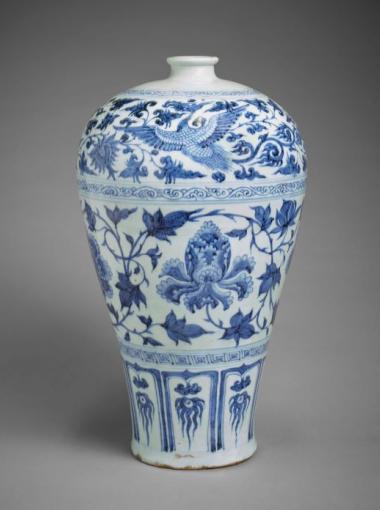This exceptional screen presents the particularity of being mounted on a frame of precious wood; at the bottom of each of its panels is carved a mythical beast, standing out against a background of lacy clouds.
The lacquered side, in keeping with the technique known as “Coromandel”, with a gold background, is adorned with the famous theme of the “hundred birds paying tribute to the phoenix”, an allegory of good government. The phoenix, the empress’s symbol, that we distinguish by its size (larger than the other birds) and elegance, is slightly to the right. It is facing the solar star that appears haloed with white clouds in the upper part at the centre of the screen – probably an allusion to the emperor’s power. All around, pairs of birds (peacocks, pheasants, fly-catchers, jays, ducks, blackbirds, tits, gobblers, nightingales, willow-warblers, magpies, starlings, cranes, quails, etc.) frolic amidst the branches and the waters, feasting on butterflies, grasshoppers, and other insects within a landscape whose vegetation and flowers (pines, China apricot trees, cherry trees, peonies, magnolias, lilies, hydrangeas, azaleas, roses, lotus, chrysanthemums, and camelias, etc.) evoke the cycle of the seasons.
To craft this sumptuous and luxuriant décor, the lacquer panels were carefully hollowed out with a gouge, only sparing narrow brown lines that form the outlines of the design. Each area of the motif (leaf, petal, or feather) was then filled with colour while the background was entirely layered with gold leaves. The rearside presents a lengthy dedication dated to the third year of the emperor Yongzheng’s reign. It is written in gold characters on breadths of dark green silk mounted on the back of each sheet of the screen and topped by small landscapes on a gold background painted in distemper on paper.

